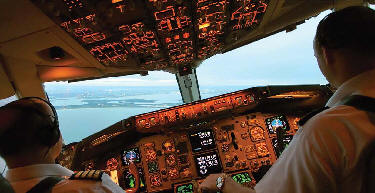 |
|
|
|
|
|
|||
|
By Jim Douglas |
||||
 |
May 20, 2010 - The
eruption of the Eyjafjallajökull volcano caused havoc in European air
transport. It left millions of passengers stranded for days and even
weeks, waiting for the ash cloud to dissipate over While discussions focused on how to re-open the airspace, one essential element was hardly touched upon: the aircraft Captain is finally responsible for the safe conduct of a flight. Pilots are selected, trained and licensed to take these ‘life and death’ decisions. However they need to have the proper tools and training to perform the job and as far as volcanic ash is concerned this still is a problem. |
|||
|
|
||||
|
The effect of the eruption on the functioning of European air transport was very dramatic and unforeseen. Was widespread closure of the airspace an overreaction or a necessary approach based on the ‘safety first’ principle – a principle which is at the center of ECA’s work? Flying on a European Commercial Airliner is one of the safest pastimes we undertake in our lives – and it is this way because of the safety-first principle. We should never abandon it to chase profit or convenience. Since the crisis, many meetings have been organized and there are many more to come. ICAO has instigated an International Volcanic Ash Task Force. Eurocontrol established a Volcanic Ash central safety data collection point, with the aim of collecting and analyzing post flight data. The aim is to learn lessons in order to improve safety, flight efficiency and capacity within the specific volcanic ash environment. On May 4 an extraordinary EU Council of the Ministers of Transport decided on a list of actions including the creation of a crisis coordination unit and an aviation group gathering all aviation stakeholders at European level to follow-up the crisis measures. The Council also agreed on the need to swiftly establish binding limits, at EU level, which clearly define the safety envelope for engines and aircraft as regards the risk of volcanic ashes. The importance of this decision cannot be emphasized enough. Certification is the basis of everything: the first question that needs a clear, scientific and satisfactory answer is what concentration of volcanic ash is tolerated by both the engines and the airframe.
|
||||

